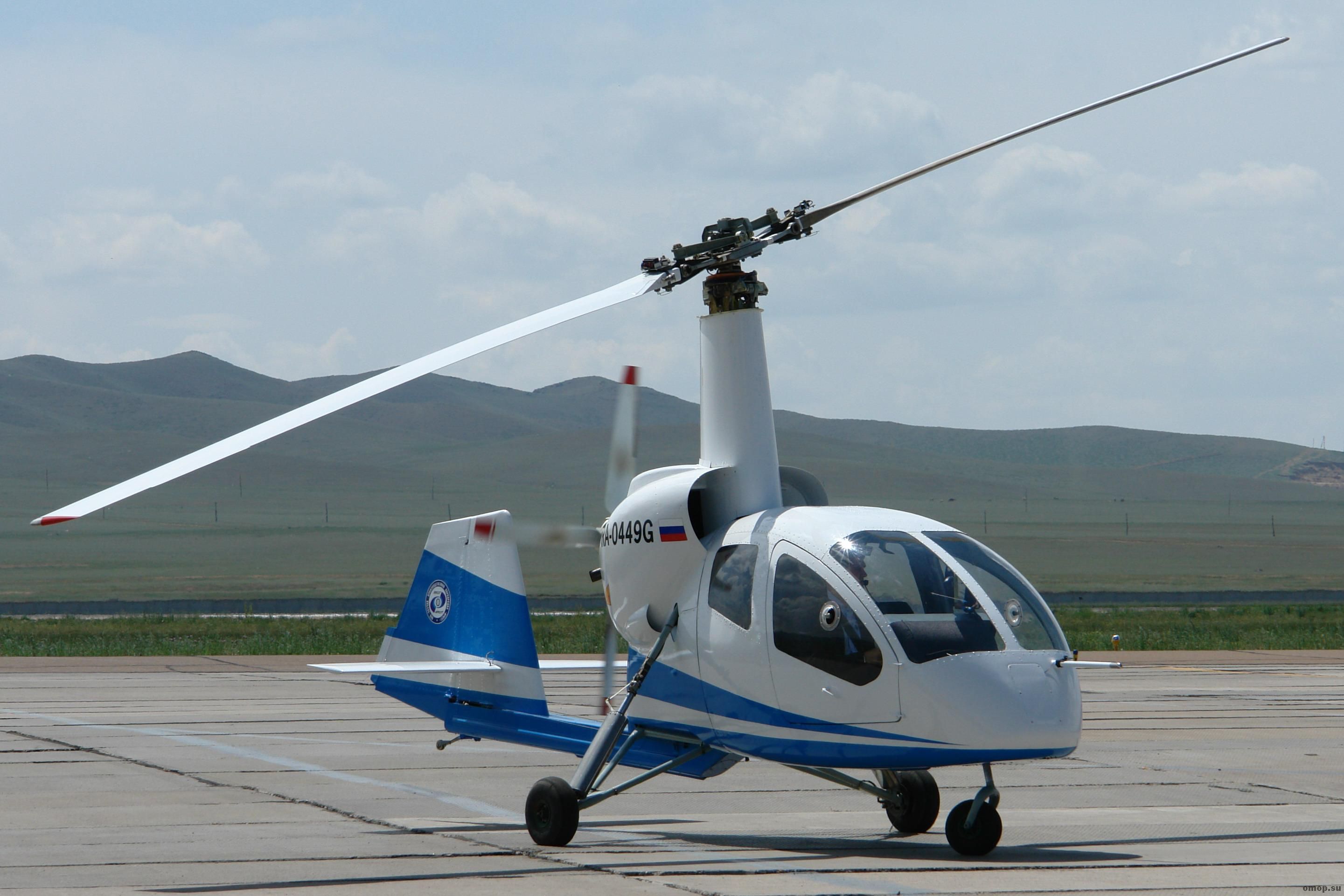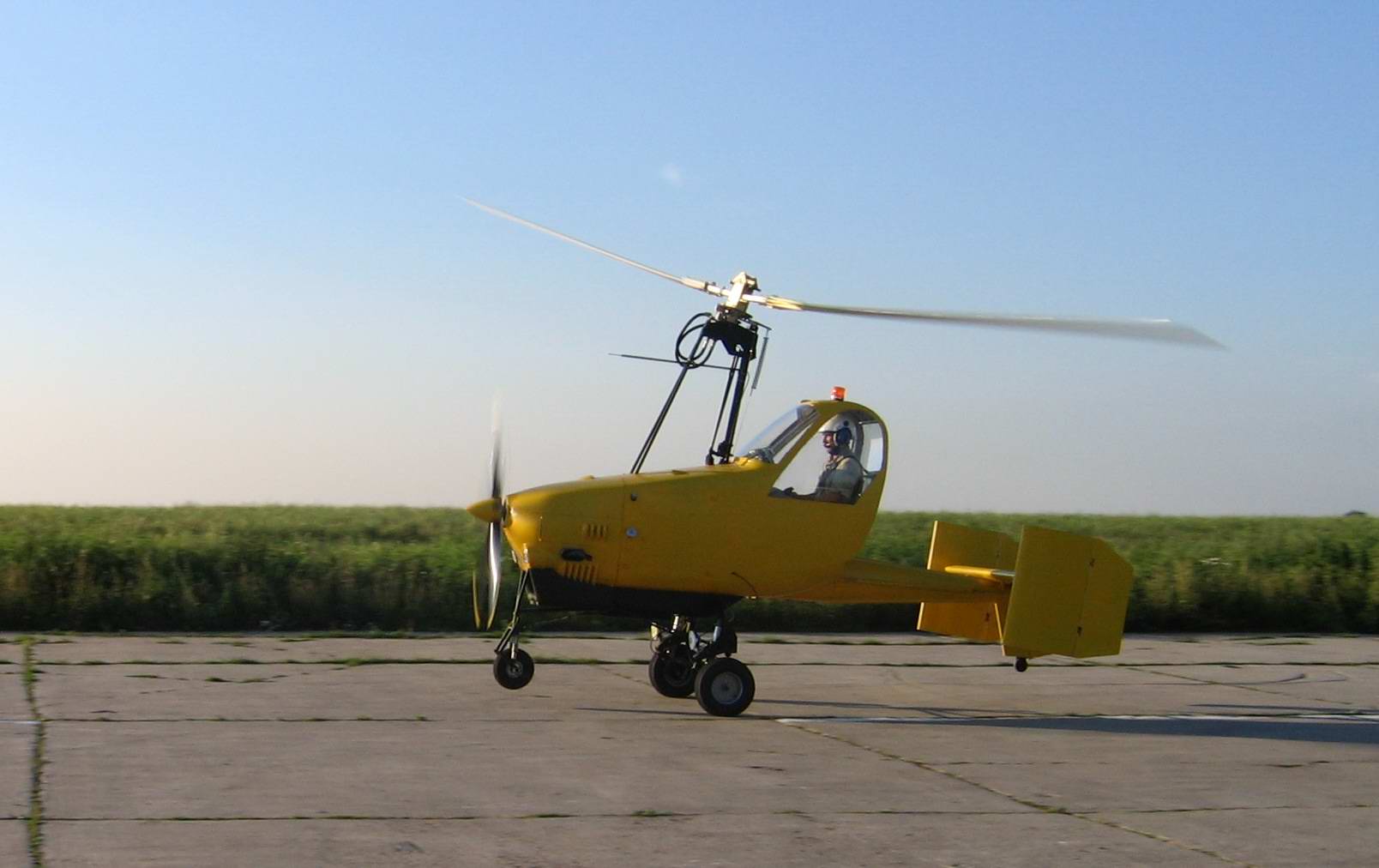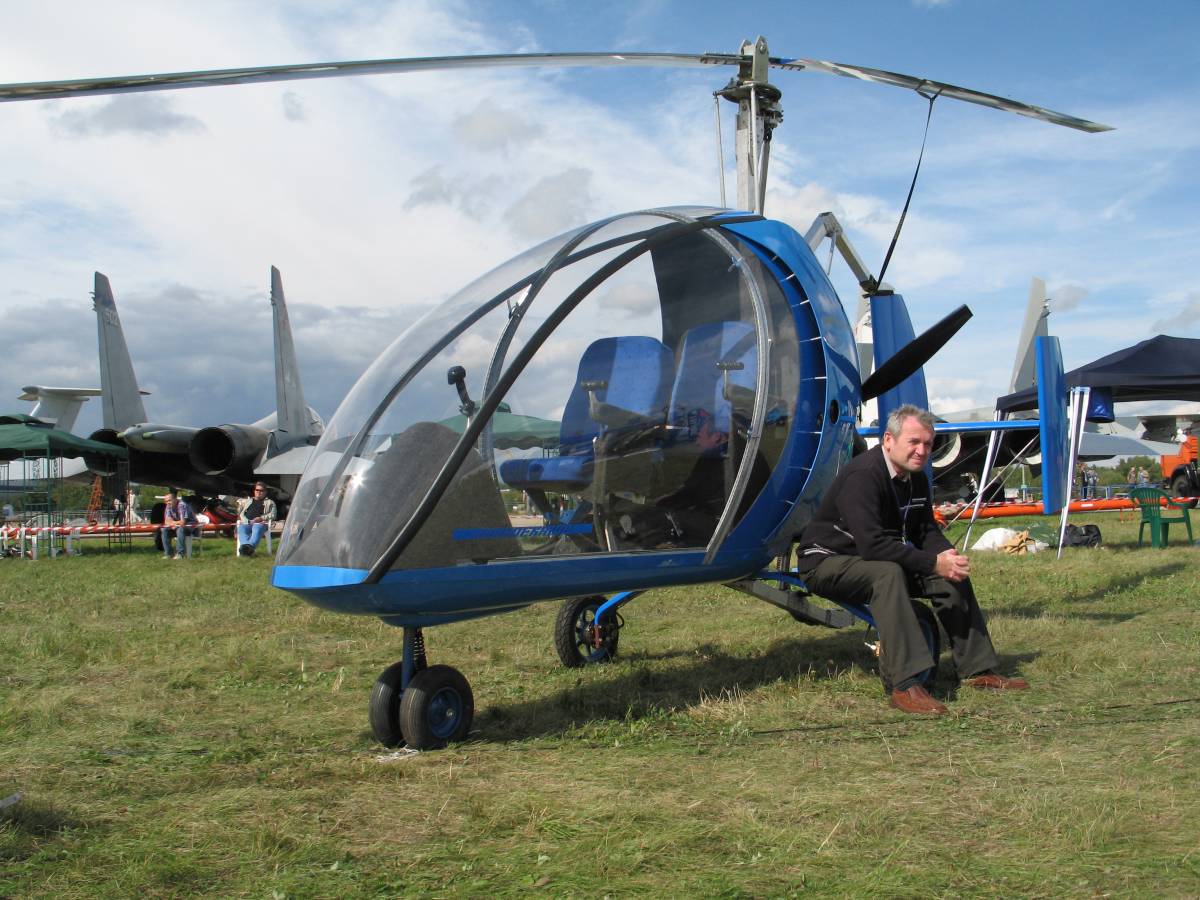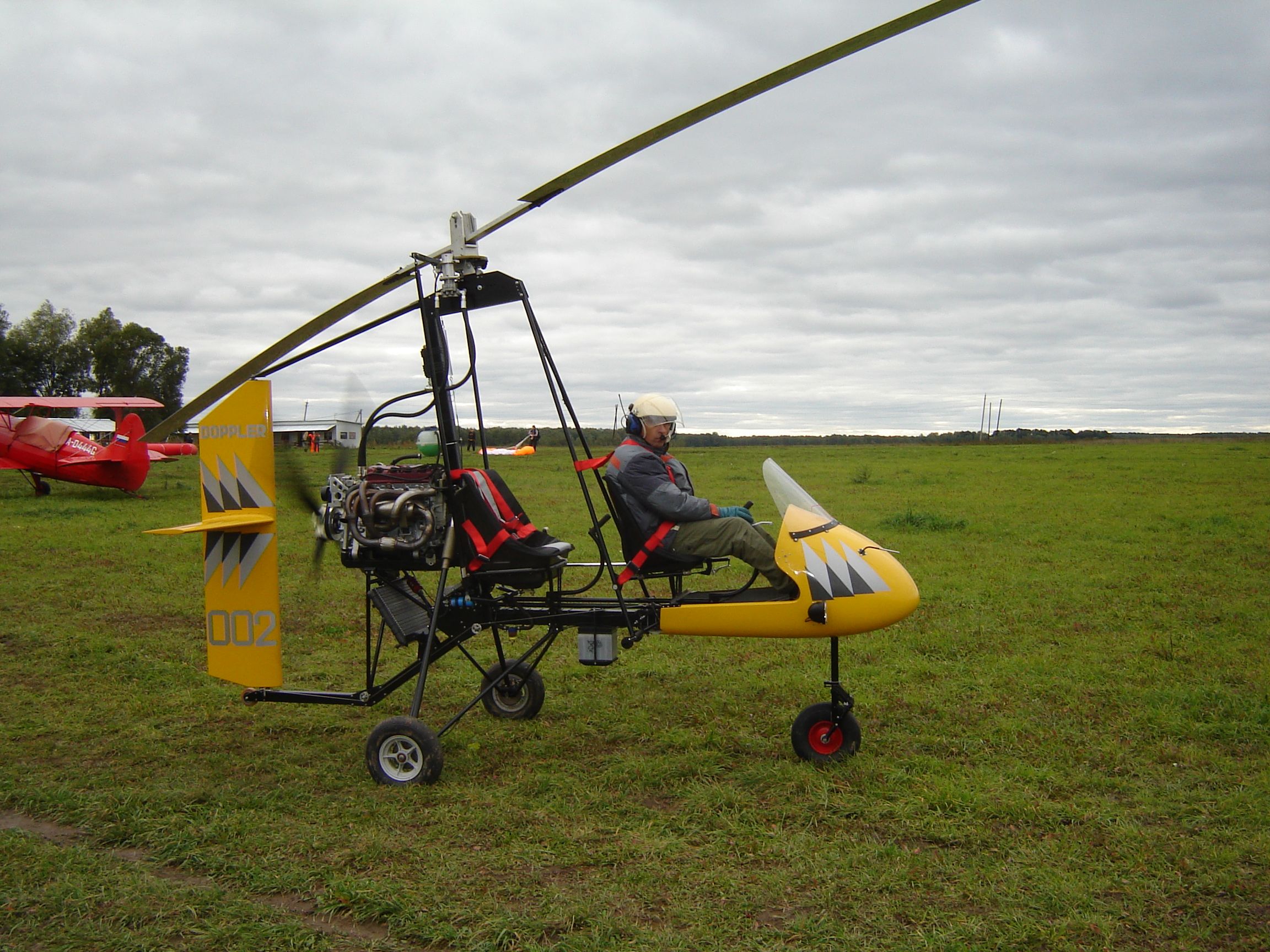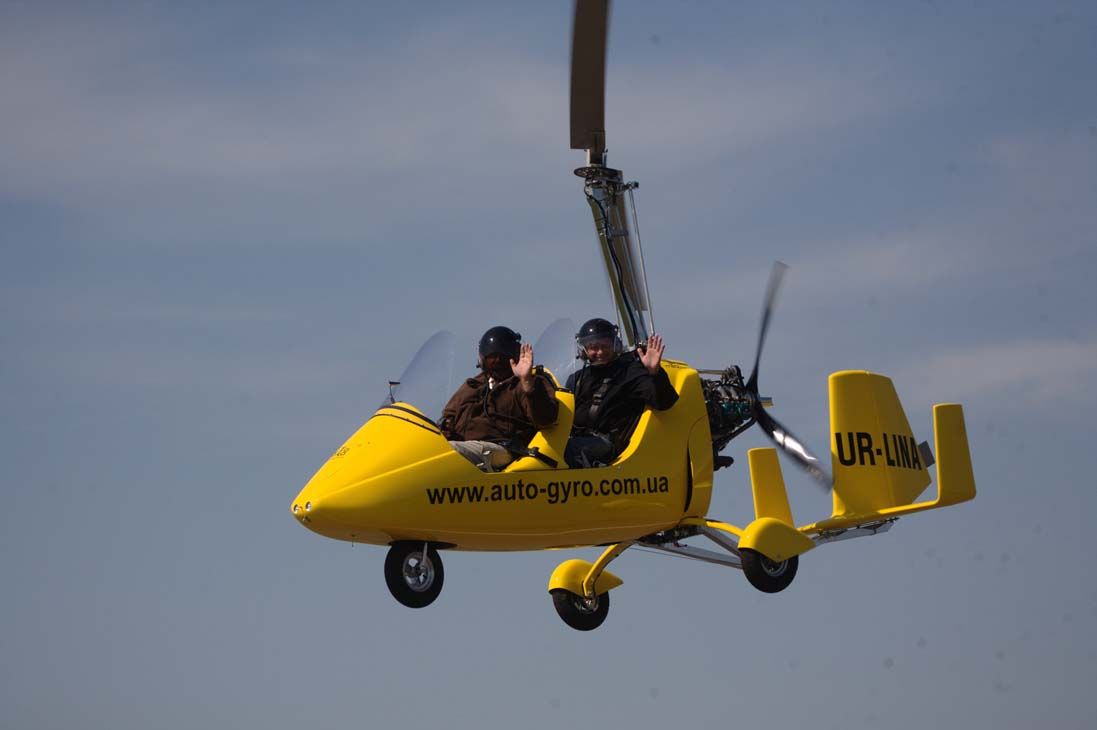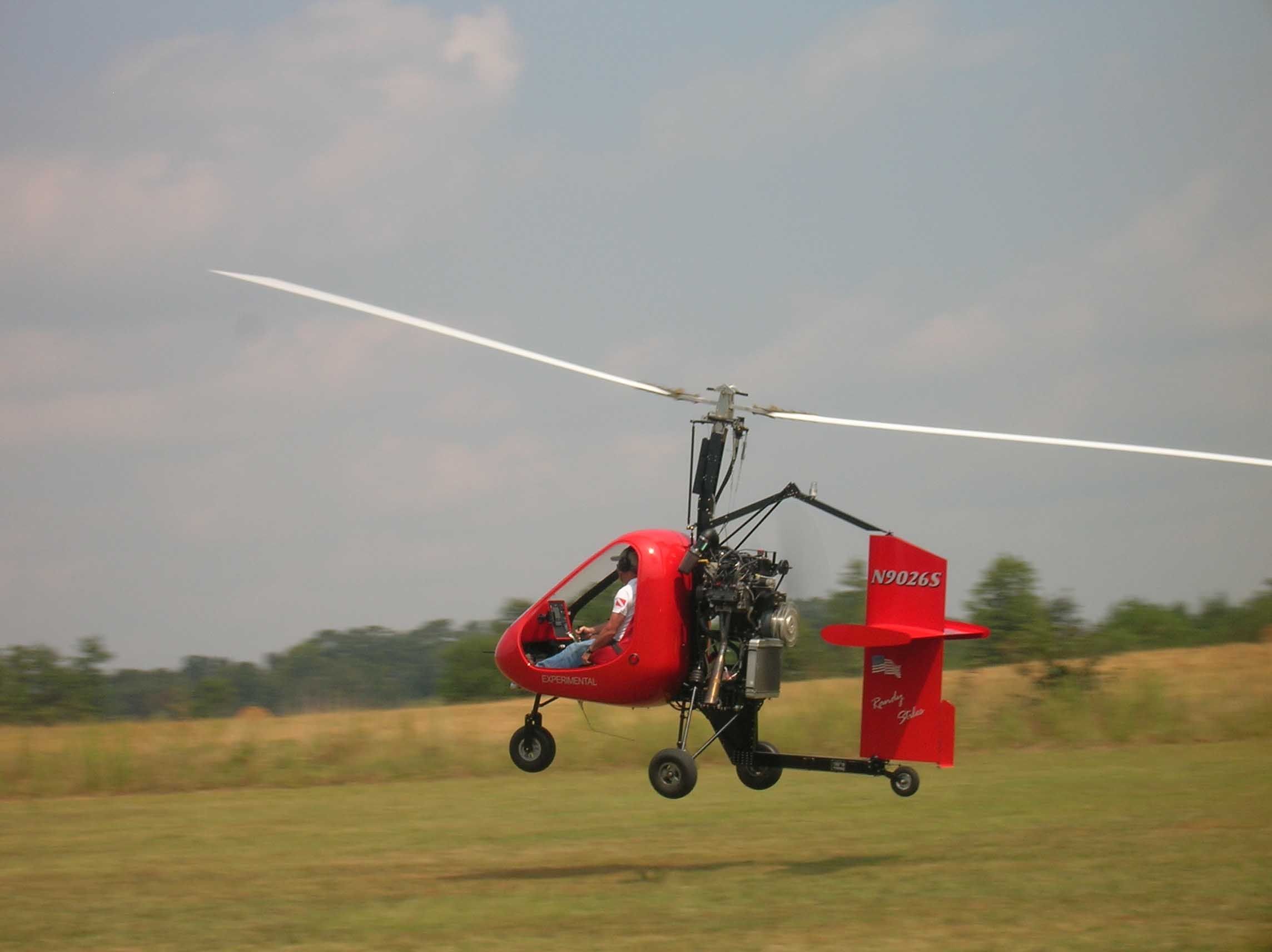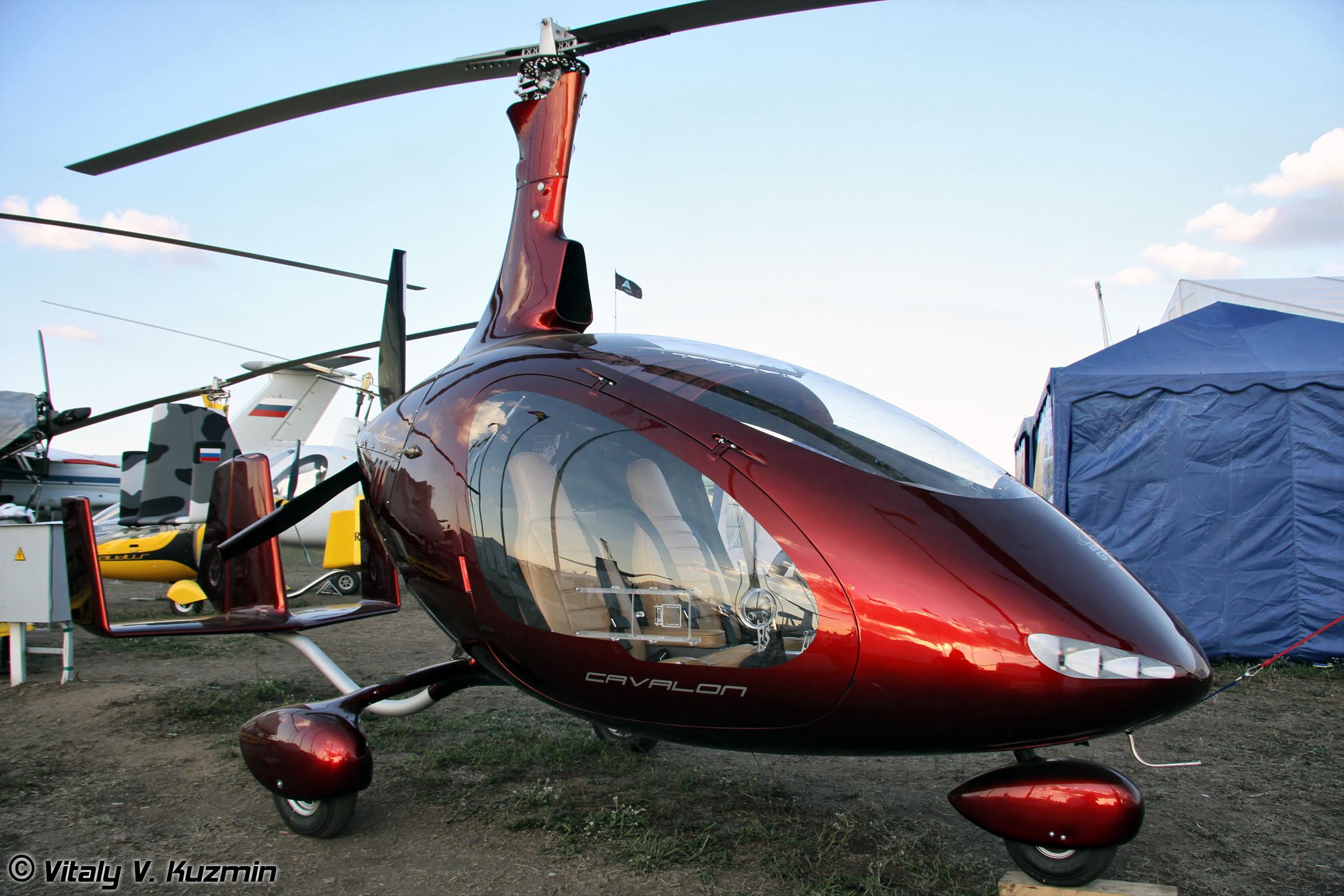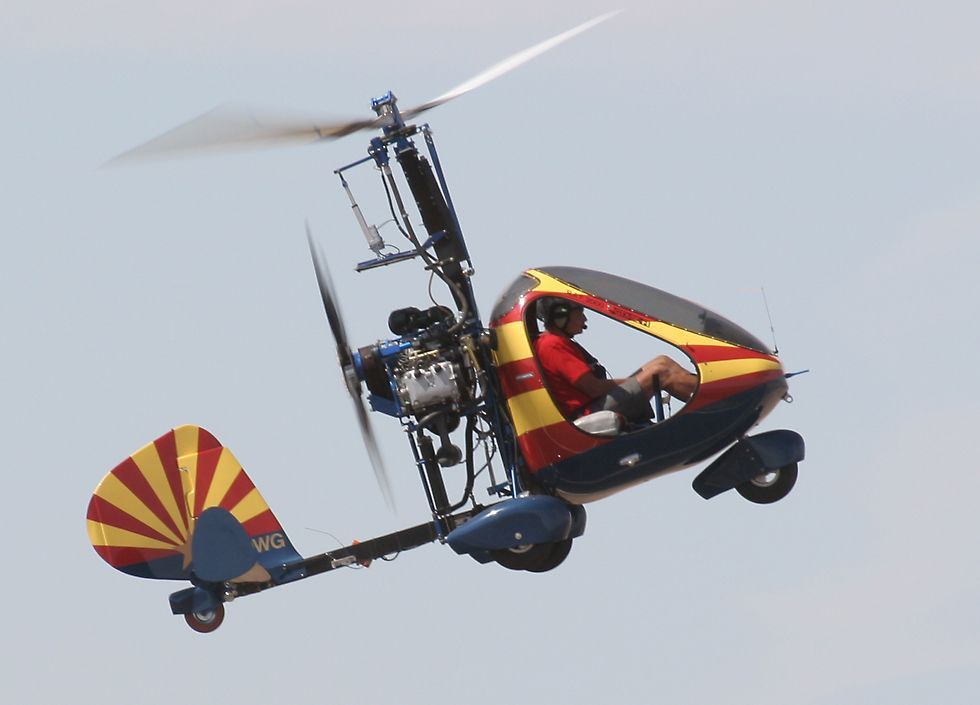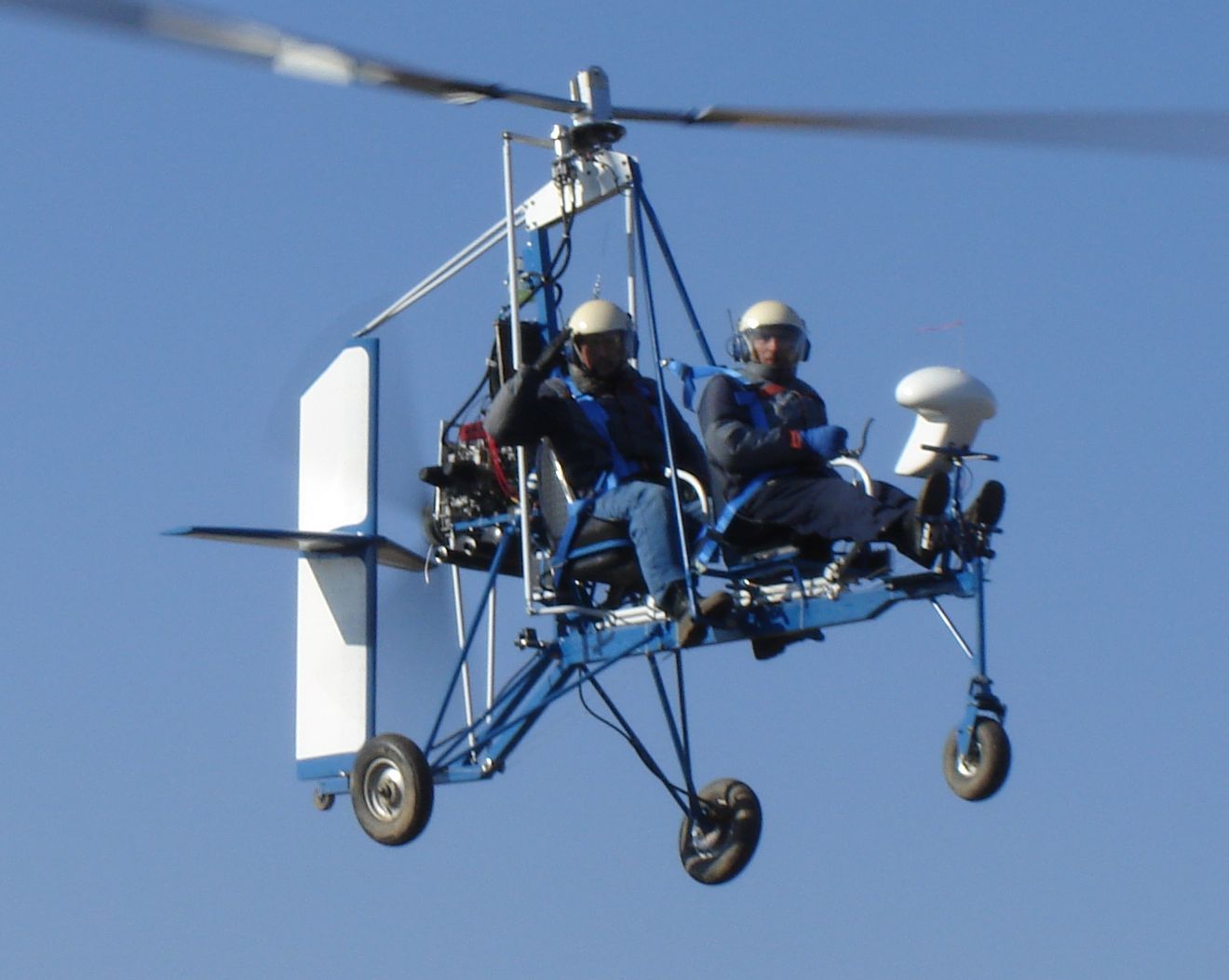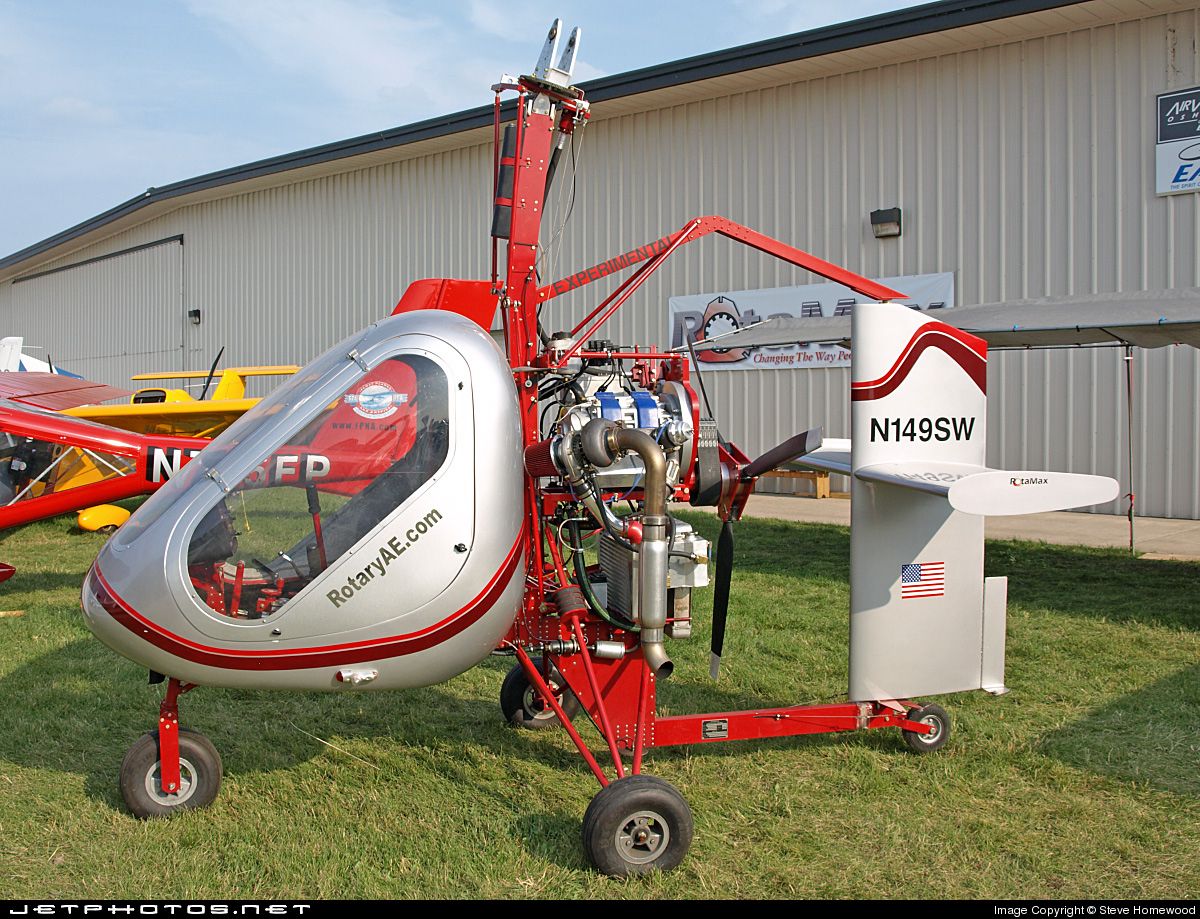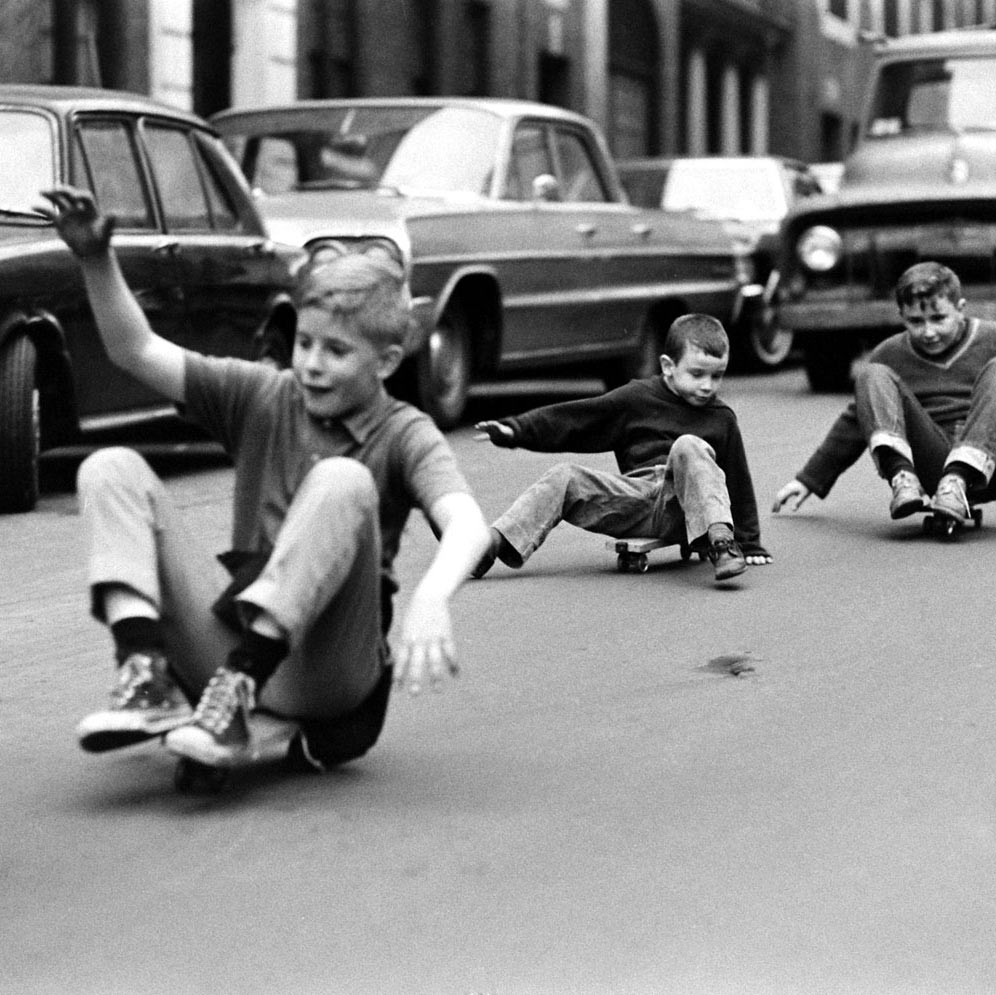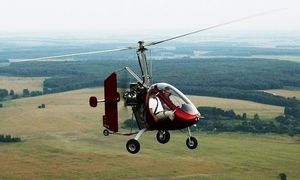 Photo of an autogyro in flight
Most people, not directly involved in aviation, upon seeing this aircraft either in flight or on the ground, would likely think: “What a cute little helicopter!” — and they would be mistaken. Beyond superficial resemblance, the similarities end there. The critical difference lies in the principles by which autogyros and helicopters fly.
Photo of an autogyro in flight
Most people, not directly involved in aviation, upon seeing this aircraft either in flight or on the ground, would likely think: “What a cute little helicopter!” — and they would be mistaken. Beyond superficial resemblance, the similarities end there. The critical difference lies in the principles by which autogyros and helicopters fly.
Why the Autogyro Can Fly
In a helicopter, the lift and thrust are created by the rotation of the main rotor (one or multiple), powered continuously by the engine through a complex transmission system. A swashplate adjusts the angle of the rotor’s blades to ensure directional movement, speed regulation, and maneuverability.
Motorized hang glider Read about another type of ultralight aviation vehicle — the motorized hang glider — also featured on our website.
Information on paramotors and powered parachutes can be found here . Discover various soft-wing aircraft powered by engines.
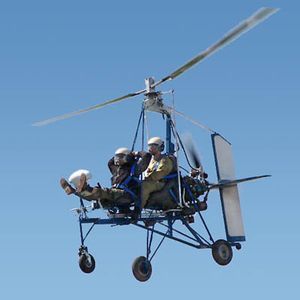 Flying an autogyro
The design and principle of the autogyro are entirely different and arguably more closely related to that of an airplane (or a glider, motorized hang glider).
Flying an autogyro
The design and principle of the autogyro are entirely different and arguably more closely related to that of an airplane (or a glider, motorized hang glider).
In the autogyro, lift is generated by airflow, but the role of the wing is played by a freely rotating rotor. Forward motion is provided by thrust from a push or pull propeller powered by an engine, placed either in front of or behind the aircraft. So, what forces the rotor to spin? It is purely the incoming airflow. This phenomenon is called autorotation.
Undoubtedly, this principle was inspired by nature itself. Take a closer look at the seeds of certain trees (like maple or linden), which are equipped with a sort of natural “propeller.” When mature and detached from the branch, these seeds do not fall straight down. Air resistance spins their “rotors,” enabling them to glide for some time, drifting far from the parent tree. Gravity eventually wins, and they land. But it is humanity’s genius to strive for control over such a flight.
In an autogyro, engine power is applied to the rotor only in the initial phase of flight, to give the rotor the necessary speed for takeoff. After a short takeoff run and liftoff, the autorotation principle takes over — the rotor spins entirely on its own, all the way until the vehicle lands. The rotor, tilted at an angle of attack, provides the necessary lift for flight.
The History of This Aircraft
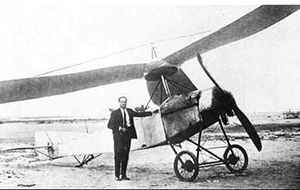 The history of the autogyro's creation
The first person to seriously study and apply the principle of autorotation was Spanish engineer and inventor Juan de la Cierva. At the dawn of aviation, he had been designing airplanes, but a crash of one of his airplanes — a three-engine biplane — led him to shift his focus entirely toward the unexplored field of rotorcraft.
The history of the autogyro's creation
The first person to seriously study and apply the principle of autorotation was Spanish engineer and inventor Juan de la Cierva. At the dawn of aviation, he had been designing airplanes, but a crash of one of his airplanes — a three-engine biplane — led him to shift his focus entirely toward the unexplored field of rotorcraft.
After extensive wind tunnel tests, de la Cierva articulated and scientifically validated the principle of autorotation. By 1919, the first design was completed, and in 1923, the autogyro C-4 made its maiden flight. Structurally, it featured a conventional airplane fuselage, but instead of wings, it was equipped with a rotor. After further refinements, small-scale production of these machines began in France, England, and the United States.
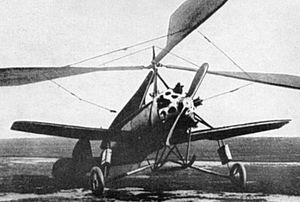 The first Soviet autogyro KASKR-1
Around the same time, Soviet aviation engineers were pursuing a similar path. In a specially established department for advanced designs (known as the OOK) at TsAGI, they were working on their own autogyro prototypes. The result was that the first Soviet autogyro, the KASKR-1, took flight in 1929.
The first Soviet autogyro KASKR-1
Around the same time, Soviet aviation engineers were pursuing a similar path. In a specially established department for advanced designs (known as the OOK) at TsAGI, they were working on their own autogyro prototypes. The result was that the first Soviet autogyro, the KASKR-1, took flight in 1929.
It was developed by a group of young engineers, including Nikolai Ilyich Kamov, who later became famous as a helicopter designer and the creator of the “Ka” series of rotorcraft. Notably, Kamov often participated in the flight tests of his own designs.
The KASKR-2 was a more refined and reliable machine, which was successfully demonstrated to a high-profile government commission at Khodynka Aerodrome in May 1931.
Bungee Jumping
For those who love heights, we recommend not to miss the story about various types of jumping from heights: bungee jumping , rope jumping, BASE jumping, and others.
Read about rock climbing and its variations on this page .
Further explorations and design improvements led to the creation of a production model named R-7. This device was built using the design of a winged autogyro, which significantly reduced the load on the rotor and improved speed characteristics.
It might seem incredible, but it was precisely the R-7 that, back in 1934, set a speed record for flying machines of this class – 220 kilometers per hour, which remains unbeaten to this day!
N.I. Kamov not only developed and refined his aircraft, but also constantly sought practical applications for it. As early as those years, R-7 autogyros were used for spraying agricultural fields.
During the rescue operation for removing the first Papanin polar expedition from an iceberg in 1938, the icebreaker “Ermak” had an R-7 ready for takeoff. Although the help of such deck aviation was not eventually needed, the very fact speaks to the high reliability of the machine.
Unfortunately, World War II interrupted many engineering initiatives in this field. The later widespread fascination with helicopter technology pushed autogyros into the background.
The Autogyro in Combat
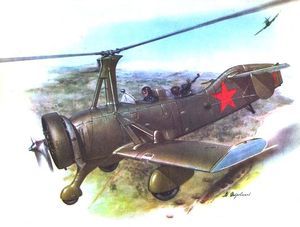 Autogyro A-7-ZA
Autogyro A-7-ZA
Understandably, in the first half of the last century during this highly militarized period, any new developments were considered for their potential military applications. The autogyro was no exception.
The first combat rotor-wing machine was the same R-7. Given its ability to lift a payload of 750 kg, it was equipped with 3 machine guns, photographic equipment, communication tools, and even a small bomb kit.
A combat squadron of autogyros, the A-7-ZA, comprising five units, participated in battles on the Yelninsky salient. Unfortunately, the complete air dominance of the enemy at that time prevented the effective use of these slow-moving machines for daytime reconnaissance – instead, they were used only at night, mainly to scatter propaganda materials over enemy positions. Notably, the squadron’s engineer was none other than M.L. Mil, the future designer of the “Mi” series helicopters.
Our adversaries also made use of autogyros. For the needs of Germany’s submarine fleet, a special motorless device called the “Focke-Achgelis” Fa-330 was developed – essentially, an autogyro-kite. It could be assembled in minutes, its rotor manually spun up, and the autogyro would take off to an altitude of up to 220 meters, towed by a submarine traveling at full speed. This flight altitude allowed observation within a radius of up to 50 kilometers.
The British also made daring attempts. In preparation for their impending invasion of Northern France, they even planned to combine an autogyro with an armed military jeep for airdropping from a heavy bomber. However, despite relatively successful tests, the idea was ultimately abandoned.
Bicycle Tricks
For those wanting to learn bike tricks , the first article on this topic – how to ride on the rear wheel – is worth reading.
Learn about the new sport-entertainment called “slackline” by following this link .
Advantages and Disadvantages of the Autogyro
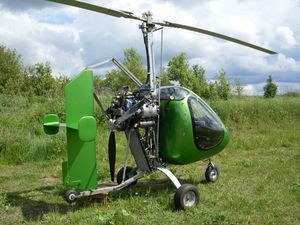 Autogyro made by craftsmen from Sergiev Posad
Autogyro made by craftsmen from Sergiev Posad
The developers of the autogyro managed to solve numerous questions related to safety and flight economy, which are difficult to achieve with airplanes or helicopters:
A loss in speed, for instance, in the event of a main engine failure, does not lead to entering a “spin.”
Rotor autorotation allows for a soft landing even with a complete loss of forward motion. Incidentally, this feature is also used in helicopters – they are equipped with an autorotation mode for emergencies.
A short takeoff roll and landing area are required.
It is less sensitive to thermal currents and turbulence.
Economical to operate, simple in design, and significantly cheaper to produce.
Operating an autogyro is much simpler than piloting an airplane or helicopter.
Practically immune to wind: speeds of up to 20 meters per second are considered normal conditions for it.
Of course, there are several disadvantages as well, which designers and enthusiasts are constantly working to address:
There is a possibility of “flipping over” during landing, especially in models with weak tail assemblies.
The phenomenon called a “dead autorotation zone,” which leads to the rotor stopping, is not yet fully understood.
Flights in conditions where icing might occur are unacceptable – this could lead to the rotor exiting the autorotation mode.
Overall, the advantages far outweigh the disadvantages, allowing the autogyro to be classified as one of the safest flying devices.
How to skateboard How to skateboard? Advice for beginners in skateboarding.
Read here about how to make your own fingerboard and learn tricks on it here .
How to choose clothing for winter sports? Article about snowboarders’ clothing
Is there a future?
 Homemade autogyro
Fans of this type of mini-aviation unanimously respond to questions like this by saying that the “era of autogyros” is just beginning. Interest in these aircraft has been revived with new energy, and today many countries around the world produce serial models of such flying machines.
Homemade autogyro
Fans of this type of mini-aviation unanimously respond to questions like this by saying that the “era of autogyros” is just beginning. Interest in these aircraft has been revived with new energy, and today many countries around the world produce serial models of such flying machines.
In terms of capacity, speed, and even fuel consumption, the autogyro boldly competes with conventional passenger cars, surpassing them with its multifunctionality and independence from roads.
Aside from purely transportation purposes, autogyros find various other uses, such as patrolling forested areas, coastlines, mountains, and busy highways. They can also be utilized for aerial photography, video recording, or observation tasks.
Some modern models are equipped with a “jump takeoff” mechanism, while others are capable of taking off successfully from a stationary position with winds exceeding 8 km/h, further enhancing the functionality of autogyros.
The leading manufacturer on today’s market is the German company “Autogyro”, which produces up to 300 machines annually. Russians are also making strides, with several serial models being produced locally: the “Irkut” from the Irkutsk Aviation Plant, the “Twist” from the “Twister-Club” Aeroclub, the “Hunter” from NPC “Aero-Astra”, and others.
The number of enthusiasts interested in this way of conquering the skies continues to grow.
